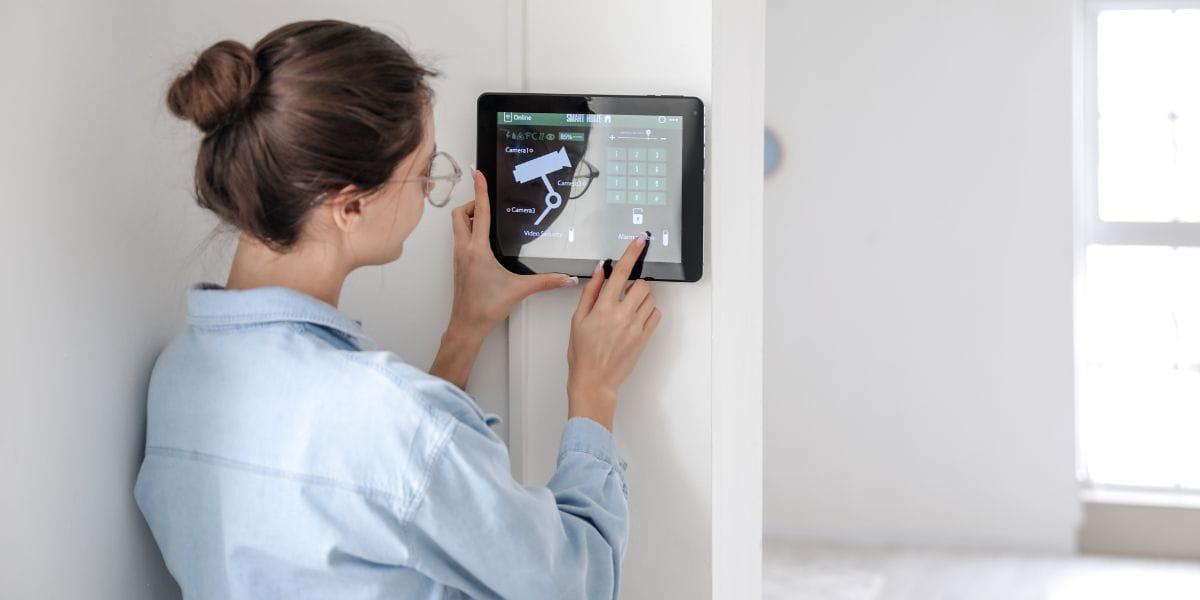Smart Home Security Market: Impact of IoT and AI Technologies

Introduction
The smart home security market has undergone a significant transformation with the integration of the Internet of Things (IoT) and Artificial Intelligence (AI). These technologies have enhanced security systems by enabling automation, real-time monitoring, and predictive analytics. This article explores the impact of IoT and AI on smart home security, highlighting their role in improving efficiency, reliability, and user experience.
The Role of IoT in Smart Home Security
1. Seamless Connectivity and Automation
IoT enables smart security devices to communicate with each other through a centralized system, enhancing automation and control. Homeowners can integrate cameras, alarms, motion sensors, and smart locks into a single platform, allowing for seamless operation and monitoring.
2. Remote Monitoring and Control
IoT-powered security systems provide real-time access to home security through mobile applications and cloud-based platforms. Users can monitor their homes remotely, receive alerts, and even control security settings from anywhere in the world.
3. Enhanced Data Collection and Analysis
IoT devices continuously collect data from various security components, improving situational awareness. This data is used to track security trends, detect anomalies, and provide actionable insights to enhance home safety.
4. Integration with Smart Home Ecosystems
Smart security devices can be integrated with broader home automation systems, such as smart lighting and thermostats. This connectivity enables automated responses, such as turning on lights when motion is detected or adjusting security settings based on user behavior.
The Role of AI in Smart Home Security
1. Advanced Threat Detection and Prevention
AI-powered security systems use machine learning algorithms to analyze patterns and detect suspicious activities. AI-enhanced cameras and sensors can differentiate between routine activities and potential threats, reducing false alarms.
2. Facial Recognition and Biometric Security
AI-driven facial recognition technology enhances access control by allowing only authorized individuals to enter a home. Biometric authentication methods, such as fingerprint scanning and voice recognition, add an extra layer of security.
3. Predictive Analytics and Automated Alerts
AI analyzes historical security data to predict potential security breaches. By identifying unusual patterns, AI-powered systems can proactively alert homeowners and law enforcement before a threat escalates.
4. Cybersecurity Enhancements
With the rise of connected security devices, AI plays a crucial role in detecting and mitigating cybersecurity threats. AI-driven encryption and anomaly detection systems help safeguard user data and prevent hacking attempts.
Market Trends and Future Outlook
The integration of IoT and AI in smart home security is expected to drive significant market growth. Innovations such as 5G connectivity, edge computing, and blockchain-based security solutions will further enhance the efficiency and reliability of smart security systems. As AI continues to evolve, its capabilities in threat prediction and automated response will become more sophisticated, making smart home security even more effective.
Conclusion
IoT and AI have revolutionized the smart home security market, providing homeowners with intelligent, automated, and predictive security solutions. These technologies enhance real-time monitoring, threat detection, and cybersecurity, ensuring a safer living environment. As advancements continue, IoT and AI will remain integral to the future of smart home security, offering innovative solutions that enhance both convenience and protection.
- Art
- Causes
- Crafts
- Dance
- Drinks
- Film
- Fitness
- Food
- Игры
- Gardening
- Health
- Главная
- Literature
- Music
- Networking
- Другое
- Party
- Religion
- Shopping
- Sports
- Theater
- Wellness


